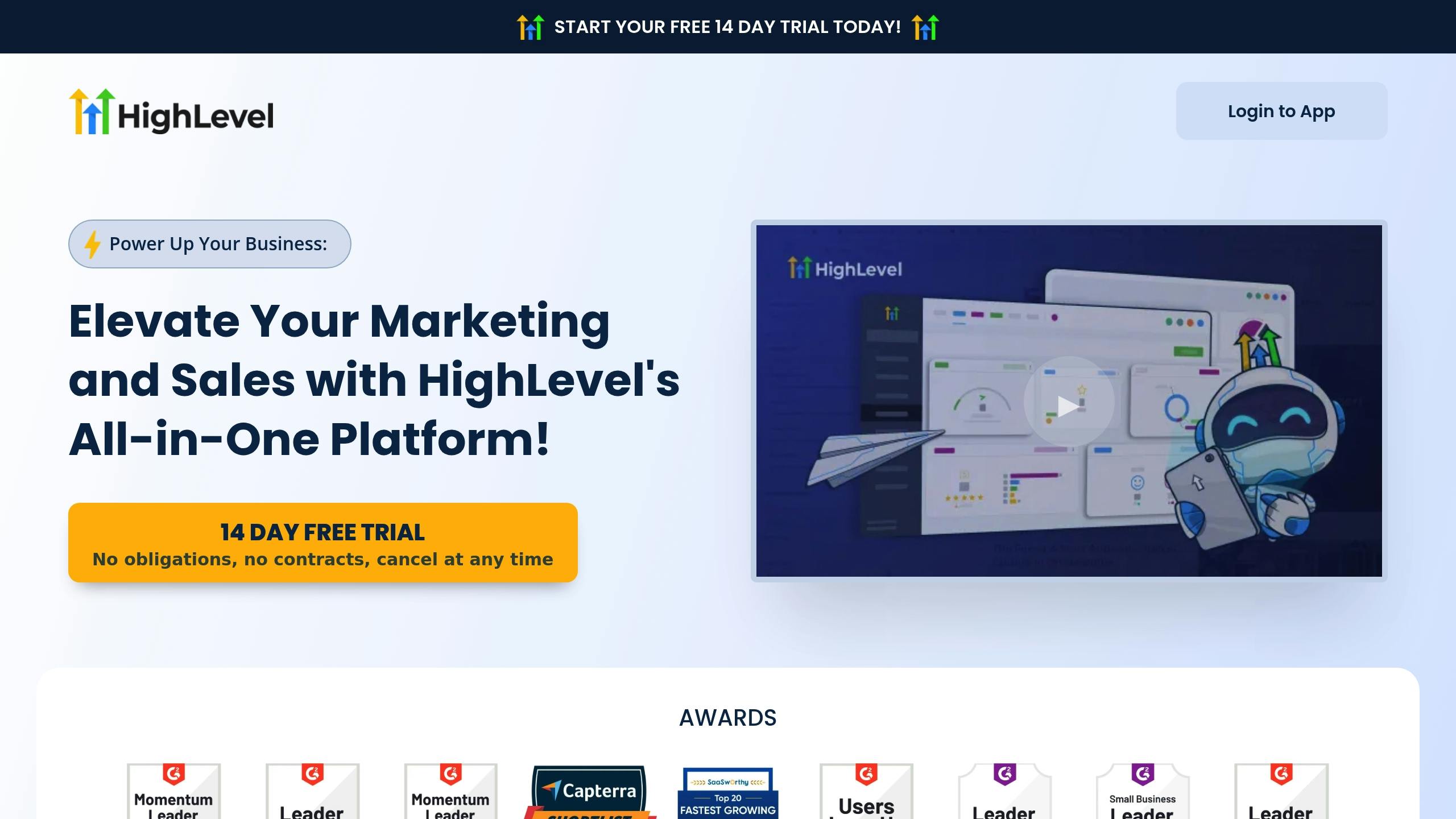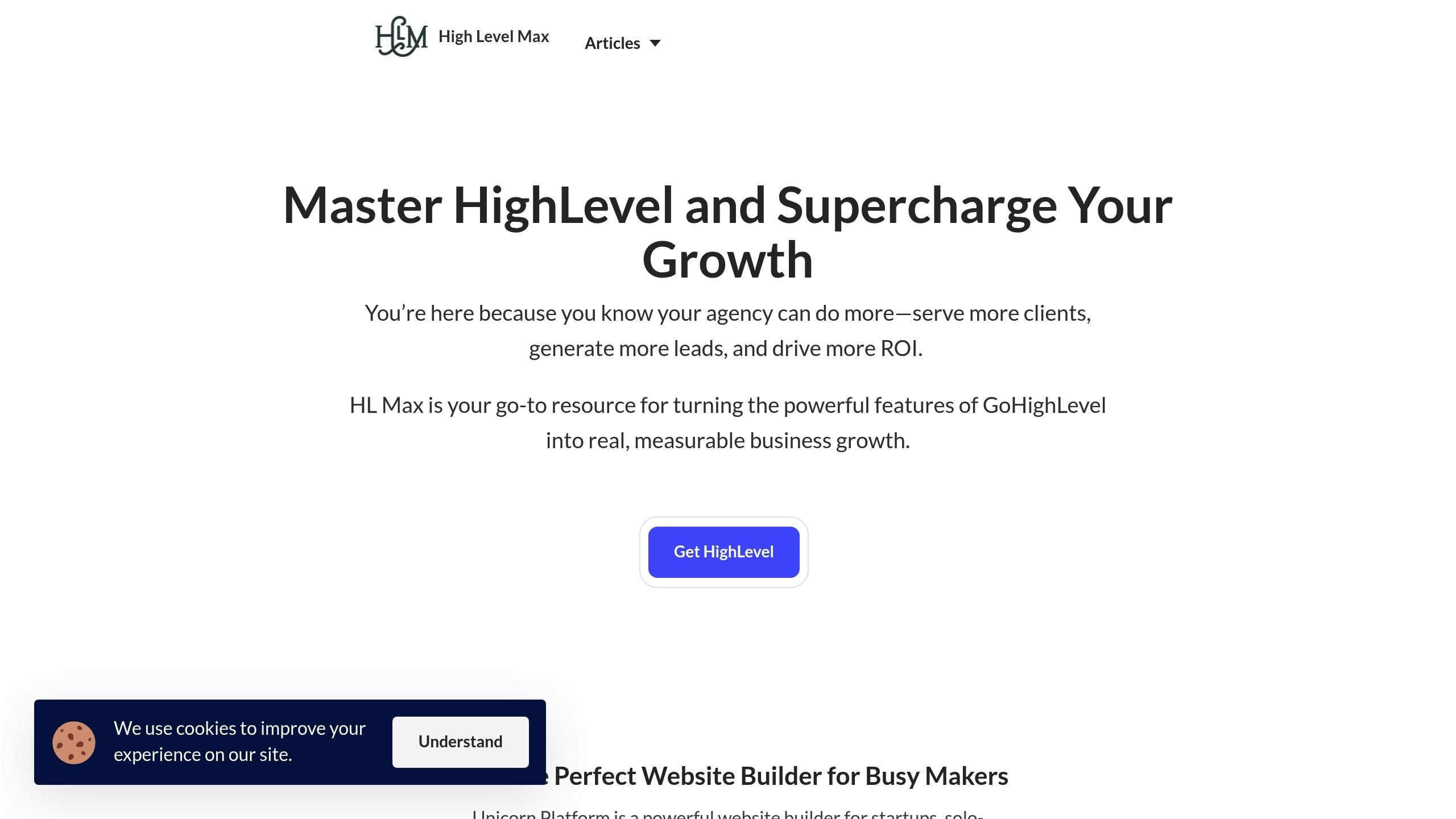Tracking post-onboarding metrics in HighLevel helps agencies improve client retention, streamline operations, and prove ROI. By monitoring key data points like retention rates, client activity, and platform usage, you can:
- Retain Clients: Spot early signs of churn and address them proactively.
- Boost Engagement: Identify underused features and provide targeted support.
- Prove Value: Use data to showcase ROI and strengthen client relationships.
Key Metrics to Track:
- Retention & Churn Rates: Monthly/annual retention, churn by segment.
- Client Lifetime Value (CLV): Revenue impact of client relationships.
- Platform Usage: Daily active users (DAU), feature adoption, session duration.
- Support Metrics: Ticket volume, response time, resolution rate.
Tools in HighLevel:

- Dashboard Analytics: Real-time insights into client activity and performance.
- Automated Reporting: Schedule and customize reports for clients.
- Integrations: Combine HighLevel data with other tools for detailed analysis.
Use these insights to reduce churn, identify upsell opportunities, and demonstrate results to clients. Ready to dive in? Let’s explore how to set up tracking, automate reporting, and grow revenue with HighLevel.
How to Create Custom Automated Client Reports in GoHighLevel
Key Performance Metrics
Tracking the right metrics is crucial for client retention and growth when using HighLevel.
Retention and Churn Rates
Keeping an eye on retention and churn rates is essential for understanding client behavior and ensuring steady growth. HighLevel provides tools to:
- Monitor Monthly Retention Rate (MRR): This shows the percentage of active clients month-over-month.
- Measure Annual Retention Rate (ARR): Helps identify seasonal trends and evaluate long-term engagement.
- Analyze Churn Rates: Break down churn across different client segments.
These insights give you a better understanding of client patterns and their overall value to your business.
Client Lifetime Value (CLV)
Client Lifetime Value (CLV) goes beyond retention metrics by showing the overall impact of client relationships. It combines factors like average revenue, how long clients stay, and upsell opportunities. You can improve CLV by implementing strategies such as targeted upselling, automating engagement workflows, and bundling services to offer more value.
Client Platform Usage Metrics
Tracking how clients use your platform can provide actionable insights to improve retention and boost success rates. By analyzing usage patterns, you can uncover opportunities to enhance ROI and strengthen client engagement.
Tool Usage Rates
Understanding which HighLevel features clients actively use helps gauge their engagement and potential ROI. Key areas to monitor include:
- Campaign Builder Usage: Track how often clients use the campaign builder.
- SMS/Email Activity: Measure message volume and engagement across communication channels.
- Pipeline Management: Monitor deal creation and progress through sales stages.
- Form Submissions: Keep an eye on the number of active forms and submission rates.
- Appointment Booking: Analyze scheduling activity and no-show rates.
This data helps pinpoint high-value features and identify areas where clients may need additional training or support.
Platform Activity Metrics
Looking at overall platform activity provides a broader view of client engagement. Focus on these metrics:
- Daily Active Users (DAU): The number of unique users accessing the platform daily.
- Session Duration: Average time clients spend on the platform per session.
- Feature Adoption Rate: The percentage of available features clients actively use.
- Login Frequency: How often clients log into their accounts.
- Task Completion Rates: The success rate of tasks initiated on the platform.
These metrics can reveal usage trends and serve as early indicators of potential churn.
Support Request Analysis
Support tickets can be a goldmine for identifying areas that need improvement. Here’s what to track:
| Support Metric | What to Track | Why It Matters |
|---|---|---|
| Ticket Volume | Number of weekly/monthly requests | Reflects overall platform usability |
| Response Time | Average time to first response | Impacts client satisfaction |
| Resolution Rate | Percentage of tickets resolved on first contact | Measures support team efficiency |
| Common Issues | Frequently reported problems | Highlights areas for training or documentation |
By analyzing these metrics, you can:
- Spot recurring issues that may stem from onboarding gaps.
- Create targeted training materials to address common challenges.
- Enhance platform documentation based on user feedback.
- Develop proactive support resources to reduce ticket volume.
These insights, combined with usage and activity metrics, provide a well-rounded view of client engagement. Regularly reviewing this data can help you improve service delivery and build stronger client relationships.
sbb-itb-f031672
Setting Up Automated Tracking
Automating metric tracking in HighLevel helps you monitor post-onboarding progress consistently, while also saving time.
Building Metric Dashboards
Create dashboards to showcase crucial metrics, such as:
- Client Health: Keep tabs on retention rates, activity levels, and daily support tickets.
- Usage Analytics: Analyze feature usage, login habits, and weekly time spent.
- Revenue Tracking: Track monthly recurring revenue (MRR), client lifetime value (LTV), and upsell opportunities.
- Support Overview: Stay updated on ticket volume, resolution speed, and satisfaction scores in real time.
Here’s how to craft a useful dashboard:
- Focus on metrics that directly influence client success.
- Establish baseline values to set benchmarks.
- Configure alerts for critical shifts in metrics.
- Use filters to sort data by client type, industry, or account size.
Once dashboards are set up, automate reporting to simplify client communications.
Scheduling Client Reports
Automated reports keep stakeholders informed. Make sure to include these elements:
- Report Content: Highlight platform usage stats, key milestones achieved, and areas requiring attention. Add visuals like graphs or progress bars to make reports more engaging.
- Delivery Timing: Customize delivery schedules to match client preferences - options could include weekly updates, monthly summaries, quarterly reviews, or annual performance reports.
- Personalization: Allow dynamic content filtering so clients receive tailored insights. Let them adjust report views and focus on the metrics they care about most.
Using Data to Grow Revenue
Data insights, derived from performance and usage metrics, can directly contribute to increasing revenue.
Preventing Client Churn
Spotting early signs of disengagement can help you retain clients. Look out for:
- A noticeable decline in platform activity
- A rise in support requests or issues
When these red flags appear, take action. Schedule regular check-ins to assess their needs, offer tailored training for underutilized features, and adjust services based on their usage patterns.
Identifying Upsell Opportunities
Your platform data can also reveal opportunities to expand services for clients who are thriving. Keep an eye on:
- Growth in their contact lists
- A rise in landing page traffic
- Higher response rates to messaging campaigns
- Steady lead quality
For clients achieving strong results, suggest advanced features or additional services that align with their success. This proactive approach not only boosts revenue but strengthens client relationships.
Highlighting Client Results
Clearly showcasing results reinforces the value of your services and supports continued investment.
- Visual Dashboards: Build dashboards that display key metrics like month-over-month growth, campaign performance comparisons, and ROI.
- Strategic Reviews: Hold regular sessions to review progress, celebrate achievements, and discuss new opportunities for growth.
- Case Studies: Develop detailed success stories that showcase specific wins, creating a compelling portfolio of client achievements.
Conclusion
Key Takeaways
Tracking post-onboarding metrics in HighLevel is a game-changer for agency performance. Metrics like retention rates, client lifetime value, and satisfaction scores provide a clear picture of client health and potential growth. Additionally, platform usage data - such as tool adoption and activity patterns - can help pinpoint struggling clients and uncover areas for growth.
By keeping an eye on these metrics, agencies can:
- Spot early signs of dissatisfaction
- Find opportunities to upsell
- Show clients the value of their investment
Use these insights to make immediate, impactful changes.
How to Get Started
- Set Up Tracking: Configure your HighLevel dashboard to monitor essentials like retention, usage, and satisfaction. Establish baseline metrics for each client.
- Automate Reporting: Build custom dashboards and schedule regular reports to keep progress visible.
- Review Regularly: Conduct monthly reviews to identify trends and address any engagement challenges promptly.
Explore More with HL Max

Looking for more in-depth guidance? HL Max offers tutorials and strategies to help you get the most out of HighLevel tracking. Learn how to build custom dashboards, automate reporting, and use data to grow your business. Check out their resources at HL Max.



